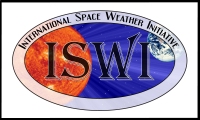The ISWI Webinar committee organizes and hosts virtual seminars on topics of interest to the community. Starting this year (2025), ISWI Webinar will be scheduled every 2 months. The webinars are recorded and the playlist with the previous seminars, which will also include future sessions, can be accessed through the following links:
***NEW*** NASA page with links: https://cdaw.gsfc.nasa.gov/webinars/ISWI/ ***NEW***
UN page with links: https://www.unoosa.org/
YouTube playlist link: https://www.youtube.com/playlist?list=PLaOqa4cng0GF3cKuj6Yz5kqG1BQ-Akkhr
The next ISWI Webinar of 2025, by Dr. Bea Gallardo-Lacourt, is scheduled for July 30th, 2025 at 3 PM Central European Time (9 AM EDT; 7:30 PM IST).
Speaker: Dr. Bea Gallardo-Lacourt
NASA/GSFC
Abstract:
The aurora is among the most captivating and scientifically rich natural phenomena observed in the night sky, typically occurring in the polar regions within a zone known as the auroral oval. This region hosts a range of visually striking and physically complex structures. Just equatorward of this lies the subauroral region—an area historically considered less visually dynamic but nonetheless critical to magnetosphere-ionosphere-
First brought to scientific attention through observations by citizen scientists, STEVE has rapidly become a focal point of interest for both the public and the research community. Its occurrence highlights previously underexplored subauroral processes and raises new questions about energy transfer and particle dynamics in near-Earth space.
This seminar will explore what we currently know about STEVE, review recent multi-instrument findings—including those from ground-based imagers, satellites, and citizen scientist reports—and identify key open questions. We will also examine the potential space weather implications of STEVE, particularly as they relate to ionospheric dynamics, subauroral electric fields, and the broader coupling between the magnetosphere and ionosphere.
